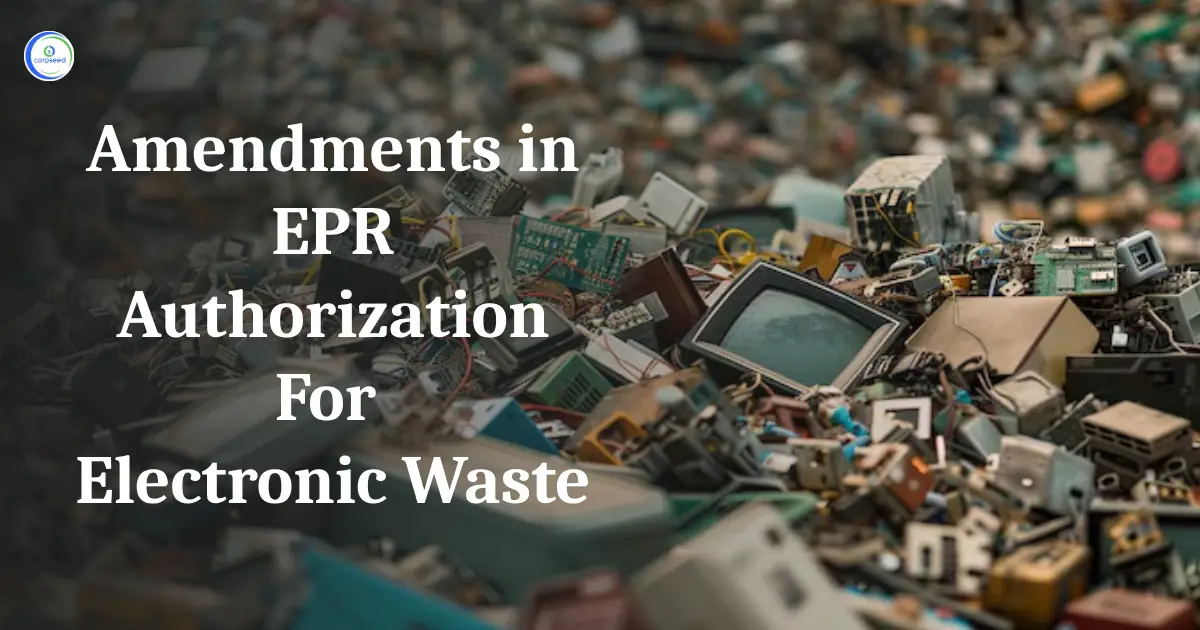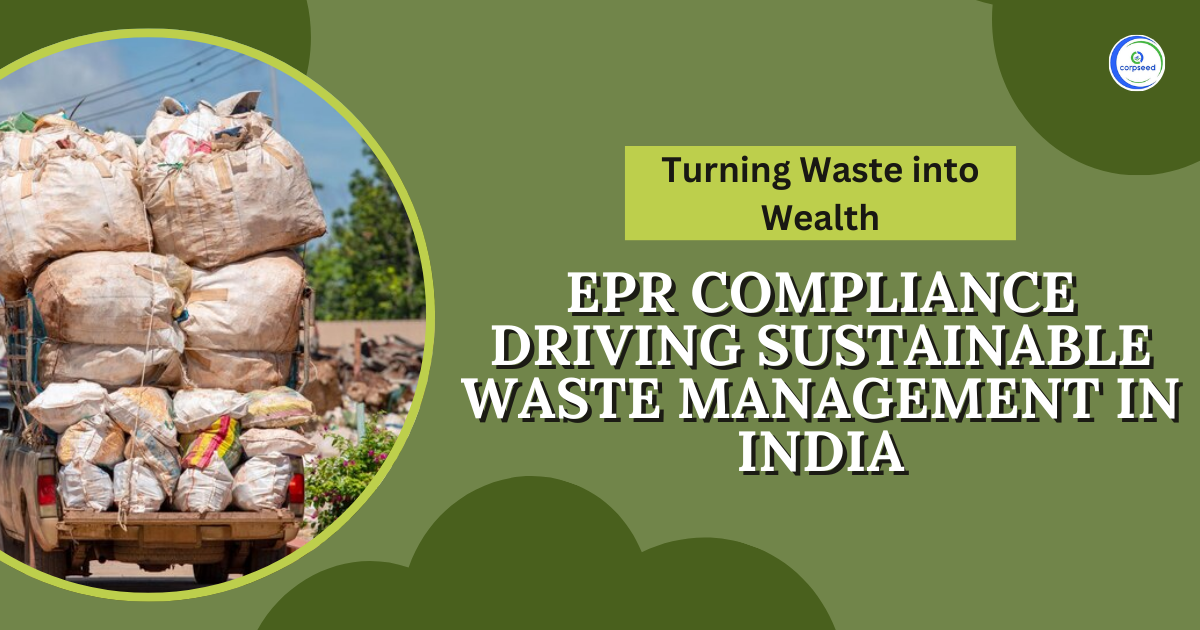Extended Producer Responsibility or EPR is defined as the regulatory framework, whereby producers are made responsible throughout the lifecycle, particularly at the point of the end of useful life. This framework is based on the understanding that it is indeed the producers that must take responsibility for wastes created by their products so that these producers develop easier-to-recycle, as well as more sustainable, products. EPR in India has so far been implemented in several sectors: from plastic to electronic and now it is directed into the toy sector.
Importance of EPR in the Toy Industry
Remarkably, the toy industry in India has grown fast with the improvement in disposable incomes and the increasing middle class. The growth, however, has increased the generation of waste, especially plastic toys. The concept of EPR in the toy industry is a step to counteract environmental impacts through effective collection and recycling of the toys when no longer in use by the consumers.
Table of Contents
- Importance of EPR in the Toy Industry
- Major Goals of EPR in the Toy Industry
- Legal Framework for EPR in Toys
- Benefits of EPR for Toy Manufacturers
- Types of Plastic Toy Moulds
- Steps Involved in Acquiring an EPR Certificate for Toys
- Environmental Impacts of Toys
- Challenges in the Toy Sector Implementation of EPR
- Conclusion
--------------Blog Contact Form-------------
Major Goals of EPR in the Toy Industry
- Waste Minimization: Provide incentives to manufacturers for minimizing waste through better design and materials.
- Environmental Friendly Practices: Encourage environmentally friendly manufacturing processes and materials.
- Awareness of Consumers: Educate consumers about responsible disposal and recycling of toys.
- Resource Recovery: Sustain recovery of valuable materials from spent toys.
Legal Framework for EPR in Toys
EPR for toys is a part of the larger policy of regulations under waste management enacted by the CPCB and subject to the Plastic Waste Management Rules and other environmental legislation.
Key Laws and Acts
- E-Waste (Management) Rules: It governs mainly electronic wastes but rules for the collection of Electronic Waste do provide a model of producer responsibility, which can be applied to toys also.
- Plastic Waste Management Rules: Since most toys comprise plastic, such rules will majorly affect how toy manufacturers address plastic waste.
- Draft Guidelines on Toy Manufacture: The government can establish particular guidelines concerning the toy industry, such as those concerning materials used, recycling processes, education to the public, and the list.
Benefits of EPR for Toy Manufacturers
- Positive Brand Building: Companies that are actively engaging in sustainable activities can build up their market image with green-conscious consumers.
- Compliance with laws: An EPR certificate ensures that an enterprise complies with the rules and regulations of the government, giving minimum chances of penalties and court cases.
- Market Access: Increasingly, more retailers are asking their suppliers for proof of sustainability practices therefore, an EPR certificate can prove to be a means of increased access to such markets.
- Resource Efficiency: The manufacturers, with the implementation of sustainable practices, can save materials that otherwise would have been wasted because they recycle and reuse the same.
Types of Plastic Toy Moulds
Plastic toys are the heroes of the toy market because their production uses almost all plastic mouldings. Plastic toys manufacturers need to note the most common plastic toy moulds that lie in the following categories:
- Hollow mould: it's used in producing hollow toy products with considerable wall thickness, complex shapes, big sizes, and low dimensional accuracy.
- Injection mould: it is the most widely applied mould in the toy manufacturing industry in India. Its features include uniform size, high quality of products, and high efficiency of production. It is applied in a number of assembly components, prime quality requests as well as big batches.
- Electroforming mould: it has a very similar simulated outer surface due to electroforming directly with actual material. It's best suited for heads, limbs, and torsos for toys such as dolls as well as animals.
Steps Involved in Acquiring an EPR Certificate for Toys
- Registration: Depending upon the scope of their operations, manufacturers shall register themselves with the CPCB or the SPCBs of the states.
- Submission of Documents: Company registration documents and GST details, list of authorized signatories, environmental compliance documents, etc., waste management and recycling plans.
- Action Plan Development: Producers have to work out an action plan elaborating how they will undertake EPR obligations along with targets for the collection and recycling rates.
- Recycling Partnership: They have to form a partnership with a certified recycler who can effectively recycle toys at the end of their life cycle.
- Annually Reporting towards CPCB: They need to submit reports to CPCB every year about the target fulfillment of EPR, reporting the volume of production, collection, recycling, and disposal of toys.
Environmental Impacts of Toys
The environmental impact of toys is a huge issue, mainly because of the excessive use of plastic. The toy industry uses 40 tons of plastic to produce every $1 million in revenue. Amazingly, 90% of the toys produced are from plastic. Many chemicals, such as heavy metals (including cadmium and lead), and other toxins like dioxins, were found embedded in plastic toys and absorbed by children through chewing on PVC toys.
The plastic toys, when littered in an ecosystem, pollute that environment mainly in oceans and wildlife. This is why India's government has advocated for sustainable toy manufacturing and the implementation of rules such as, for instance, Plastic Waste Management Amendment Rules 2021, banning single-use plastics and imposition of Extended Producer Responsibility on producers, importers, and brand owners. Policies will likely result in responsible disposal and recycling of plastic wastes, a reduction of which would likely decrease negative impacts on the natural environment.
Read Our Article: Liquid Waste Management Rules 2024
Challenges in the Toy Sector Implementation of EPR
There are several issues while implementing EPR in the toy sector:
- Awareness: Quite many manufacturers will be less aware of their rights and obligations in EPR-related legislation.
- Infrastructure: Current recycling infrastructure might not be capable enough of handling specific types of materials used in toys.
- Consumer Involvement: Getting consumers to adhere to proper methods of disposal is so important but impossible if proper techniques of awareness measures are not used.
- Compliance Charges: The small-scale manufacturers cannot afford the money and more investments in the sustainability of their operations due to compliance charges.
Conclusion
EPR introduction in the toy industry is one of the major steps taken towards sustainable waste management in India. The core of EPR is making manufacturers responsible for the entire life cycle of the product, thus encouraging innovation in designs and environmentally conscious practices within the market. As more and more companies welcome such regulations, they not only serve towards better environmental harmony but also add to brand reputation and consumer trust.
EPR may best be implemented if manufacturers, government bodies, recyclers, and consumers work collaboratively to create an effective ecosystem that encourages responsible production and consumption patterns which will promote an efficient toy industry.
This portion of the site is for informational purposes only. The content is not legal advice. The statements and opinions are the expression of author, not corpseed, and have not been evaluated by corpseed for accuracy, completeness, or changes in the law.
BOOK A FREE CONSULTATION
Get help from an experienced legal adviser. Schedule your consultation at a time that works for you and it's absolutely FREE.





.webp)



